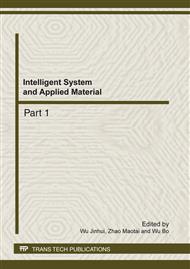p.854
p.859
p.864
p.870
p.876
p.881
p.886
p.891
p.896
Study of the Parallax Correction Algorithm Based on the Multiple Regulatory Factors
Abstract:
Binocular recognition extracts bitmap information based on different viewpoints of two horizontal lines. If it is not appropriate enough to deal with the left and right images, the computation of two images' horizontal parallaxes and vertical parallax will bring on the error. This article proposes one kind of effective algorithm that adjusts the image to be right based on traditional displacement correction algorithm, and completes the image remodeling through the two pairs of matching feature points and detection of the correlation distances. Experimental results show that the method can adjust the horizontal and vertical parallax effectively, so that the displaying effect of the stereoscopic image achieves best.
Info:
Periodical:
Pages:
876-880
Citation:
Online since:
February 2012
Authors:
Price:
Сopyright:
© 2012 Trans Tech Publications Ltd. All Rights Reserved
Share:
Citation:


